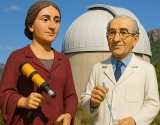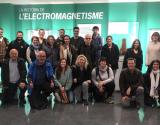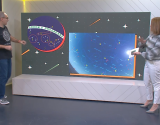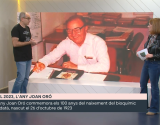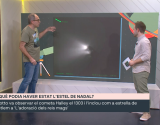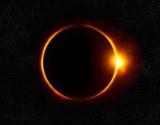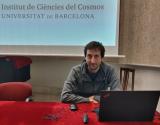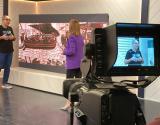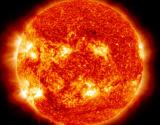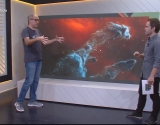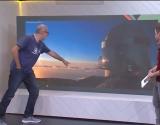News
Jornada del projecte Faulkes Telescopes a Catalunya oberta al professorat de secundària
The first conference on the experiences of the first year of the Faulkes Telescopes project in Catalonia was held at the Faculty of Physics of the University of Barcelona last April 14, 2023. The day, organized by the ICCUB, the IDP-UB and the coordinators of the project in Catalonia, gathered around twenty teachers from different secondary schools throughout the region.
Elements of astronomy on flags at the Fet a Mida TV program
Have you ever wondered why some flags incorporate astronomical elements (stars, moons, the sun)? This week the astronomer of the Institute of Cosmos Sciences of the University of Barcelona Josep Manel Carrasco brings us a collection of the most curious ones and explains their meaning.
You can see his participation here:
Remembering the figure of Joan Oró at the Fet a Mida TV program
2023 marks the Year of Joan Oró, to celebrate the centenary of the birth of this biochemist from Lleida who graduated from the University of Barcelona. Let's remember the mark he left on the world of science with the astronomer of the Institute of Cosmos Sciences of the UB (ICCUB) Josep Manel Carrasco.
You can see his participation here:
What is the origin of the Star of Bethlehem? Josep Manel Carrasco at the Fet a Mida TV Program
Comet Halley, Venus, a conjunction between Jupiter and Saturn... There are many theories about what the Christmas star could have been, the one responsible for guiding the three wise Magi towards Jesus' birthplace. We analyze them with the researcher and astronomer of the Institute of Cosmos Sciences of the University of Barcelona Josep Manel Carrasco. on the local television program "Fet a Mida".
You can see his participation here:
The app Eclipsi 2.0. surpasses the 200.000 downloads
The app Eclipsi2.0 to compute and simulat
"Exoplanets. Planets beyond the Solar System" with Toni Santana-Ros
On Saturday 20 November, in the Convention Hall of the Cerdà Museum in Puigcerdà, as part of the European Science Week, Dr. Toni Santana-Ros offered the conference: "Exoplanets. Planets beyond the Solar System". The event was organized by the Cerdanya Research Group.
Elements of astronomy in historical paintings at the Fet a Mida TV program
The astronomer of the Institute of Cosmos Sciences of the University of Barcelona Josep Manel Carrasco reviews the elements of astronomy present in historical paintings in the local television program "Fet a Mida".
You can watch his participation here starting at minute 1:19:00:
Can stars be bought? In "Aquí Catalunya", SER Catalunya
Can you buy the Sun or the stars? In the program "Aquí Catalunya", of the SER Catalunya radio channel we discussed this topic, interviewing the astronomer Josep Manel Carrasco, from the Institute of Cosmos Sciences of the University of Barcelona.
Listen to his participation here:
Interstellar nebulae and the life of the stars at the Fet a Mida TV program
The astronomer and researcher of the Institute of Cosmos Sciences of the UB Josep Manel Carrasco (@Miralcel) shows us some of the interstellar nebulae observed by the Hubble telescope to explain the life of a star.
You can see his participation here from minute 39:50:
Josep Manel Carrasco tells us about DART and Artemis on Ràdio Sant Boi
The ICCUB astronomer Josep Manel Carrasco appeared on the "La República Santboiana" program on October 26, 2022 to talk about the Artemis program to return to the Moon and about the DART mission, which has been able to successfully divert the orbit of the asteroid Dimorphos around its larger asteroid companion Didymos, with the impact of the DART Spaceship.
What does an astronomer do nowadays?
When we think of astronomy, we can imagine things like long nights, big telescopes and observations of planets and stars, but is this really the job of an astronomer these days?
